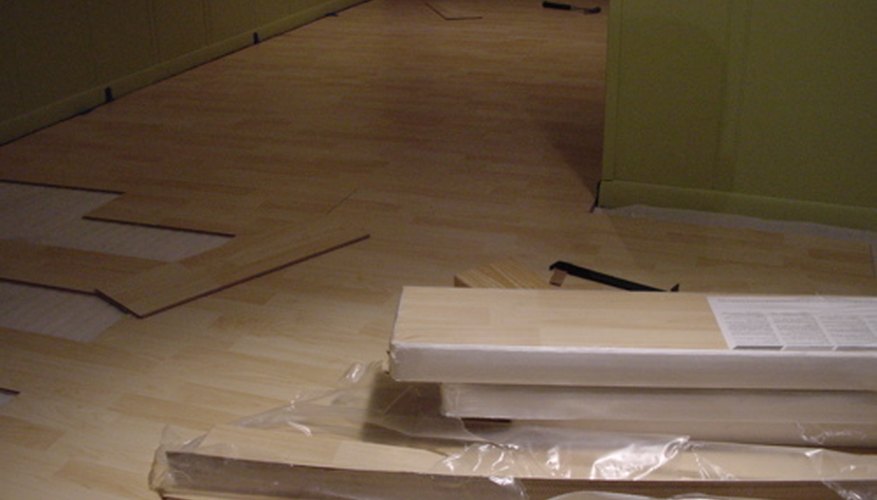Floating laminate flooring is a type of flooring that is made to resemble natural material, such as wood, stone or granite. When floating laminate flooring is installed, the pieces of flooring are hooked together and placed on top of the original flooring without securing them to the original flooring. As a result, these floors are "floating" above their base. Though the laminate flooring is not connected to the original flooring, it cannot be shifted or damaged by heavy furniture as long as the furniture is prepared and moved properly. If the furniture is not handled with care, the flooring can be chipped, scratched, cracked or dented.
- Floating laminate flooring is a type of flooring that is made to resemble natural material, such as wood, stone or granite.
- Though the laminate flooring is not connected to the original flooring, it cannot be shifted or damaged by heavy furniture as long as the furniture is prepared and moved properly.
Pairing Floating Laminate Flooring with Heavy Furniture
Floating laminate flooring is a type of flooring that is made to resemble natural material, such as wood, stone or granite. When floating laminate flooring is installed, the pieces of flooring are hooked together and placed on top of the original flooring without securing them to the original flooring. As a result, these floors are "floating" above their base. Though the laminate flooring is not connected to the original flooring, it cannot be shifted or damaged by heavy furniture as long as the furniture is prepared and moved properly. If the furniture is not handled with care, the flooring can be chipped, scratched, cracked or dented.
- Floating laminate flooring is a type of flooring that is made to resemble natural material, such as wood, stone or granite.
- Though the laminate flooring is not connected to the original flooring, it cannot be shifted or damaged by heavy furniture as long as the furniture is prepared and moved properly.
Prepare the Furniture Properly
Before placing the furniture on a floating laminate floor, it's important to cushion the furniture's base so that it does not damage the flooring. Install furniture glides (either felt pads or padded plastic cups) on the base of the legs on chairs, tables and sofas. If the piece of furniture does not have legs but rather rests on a solid beam or base, cut squares of heavy-duty felt and attach them to the base of the furniture with an adhesive. Heavy furniture that is properly prepared can be placed anywhere on the flooring without hurting it.
- Before placing the furniture on a floating laminate floor, it's important to cushion the furniture's base so that it does not damage the flooring.
- If the piece of furniture does not have legs but rather rests on a solid beam or base, cut squares of heavy-duty felt and attach them to the base of the furniture with an adhesive.
Move heavy Furniture with a Dolly
If furniture must be moved within a room, do not drag it across the floor. Dragging heavy furniture across floating laminate flooring can seriously damage, or even rip apart, the laminate boards. If furniture that is too heavy to carry must be moved, load it onto a dolly and slowly push it across the floor. When it comes time to unload, make sure there are enough people to do the job gently. Dropping or slamming heavy furniture on floating laminate flooring can dent or crack it.
- If furniture must be moved within a room, do not drag it across the floor.
- If furniture that is too heavy to carry must be moved, load it onto a dolly and slowly push it across the floor.
Keep the Flooring Clean
If heavy furniture is sitting on top of dirt particles, slight movements can scratch the laminate flooring underneath. Make sure to frequently sweep the area. Sweeping can be followed by a treatment with a dry or barely damp mop, but soaking wet mops should never be used on floating laminate flooring. Water can run into the cracks between the boards, setting between the laminate flooring and the original flooring. This can cause mould, mildew and weak spots in the original flooring.
- If heavy furniture is sitting on top of dirt particles, slight movements can scratch the laminate flooring underneath.
- Water can run into the cracks between the boards, setting between the laminate flooring and the original flooring.
